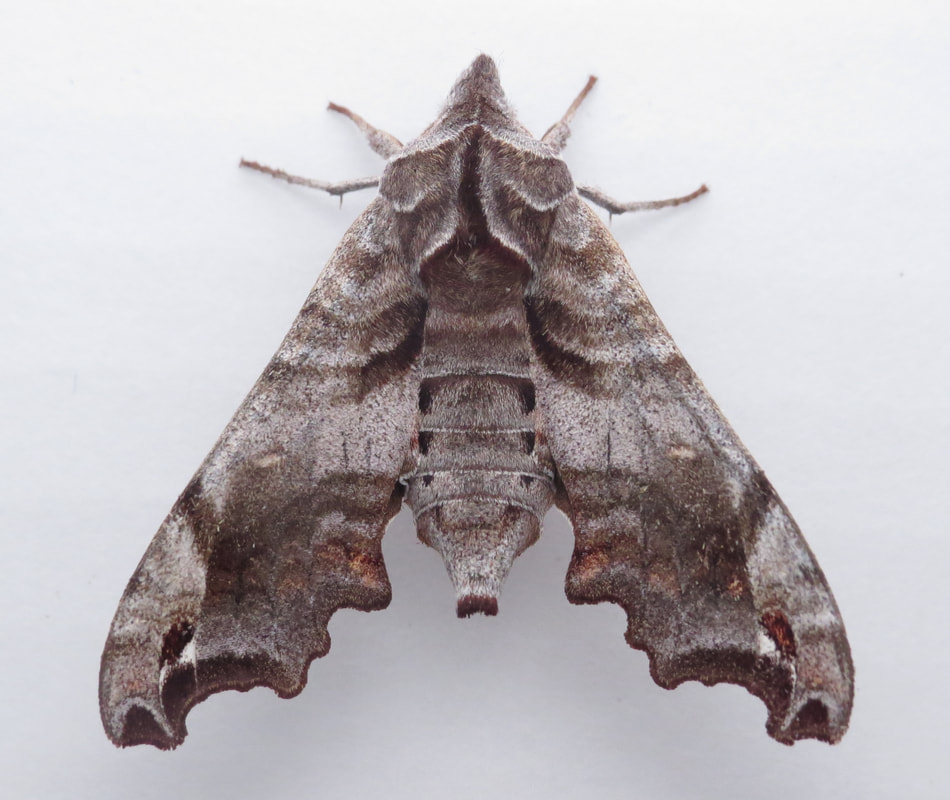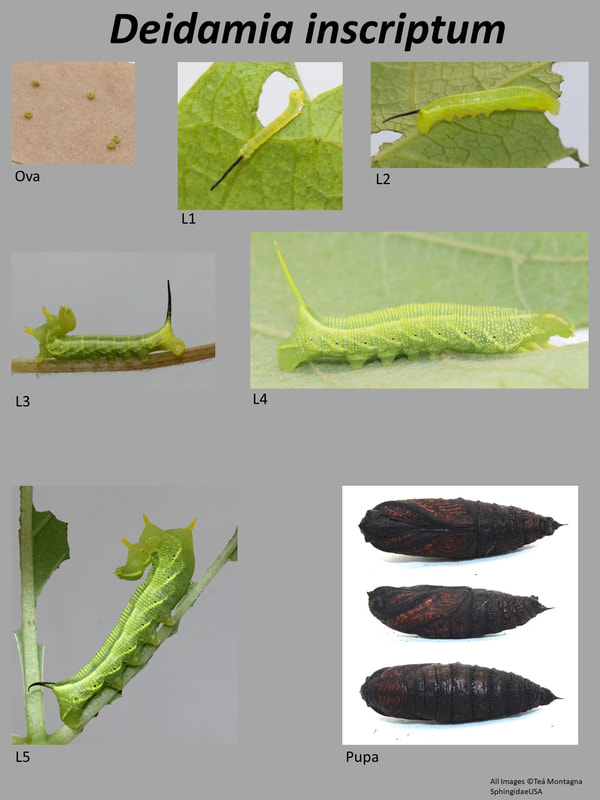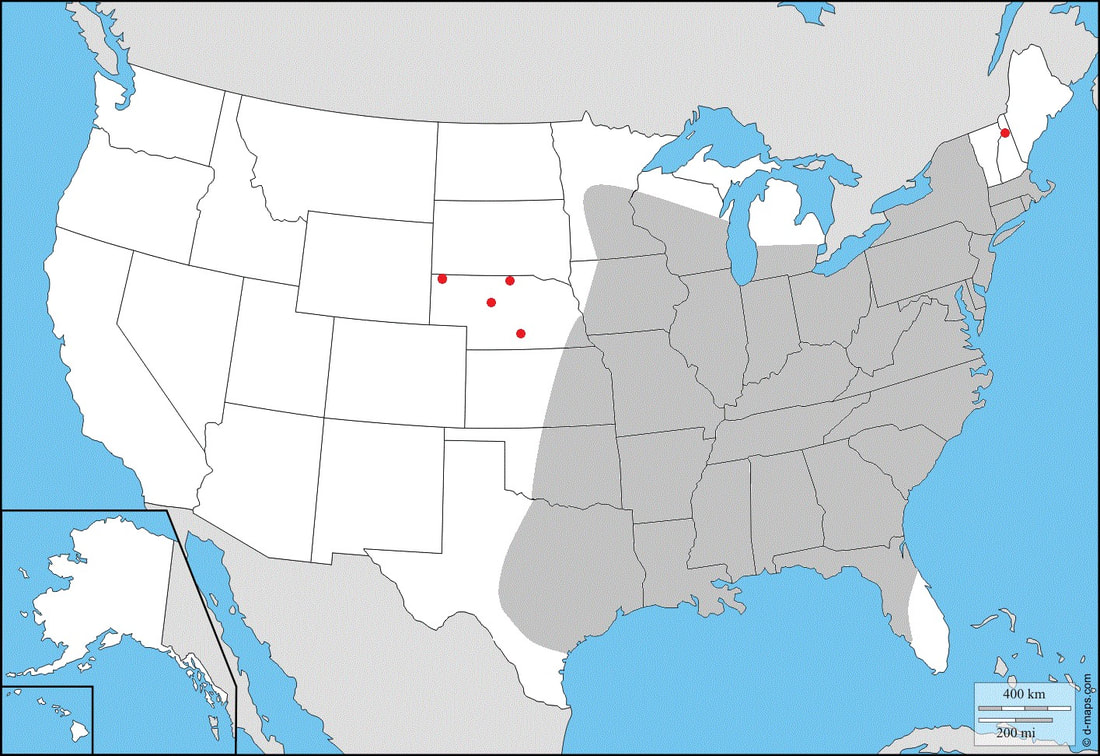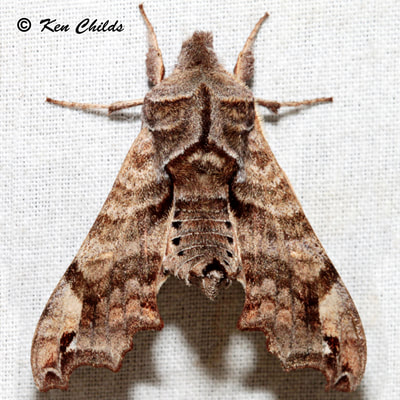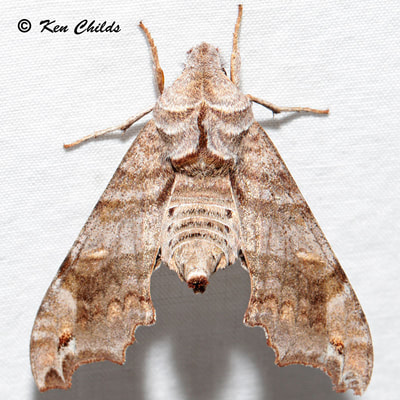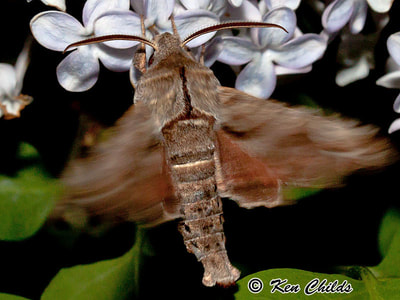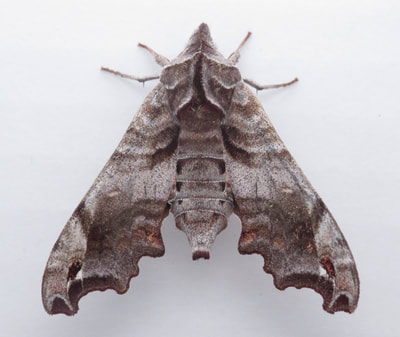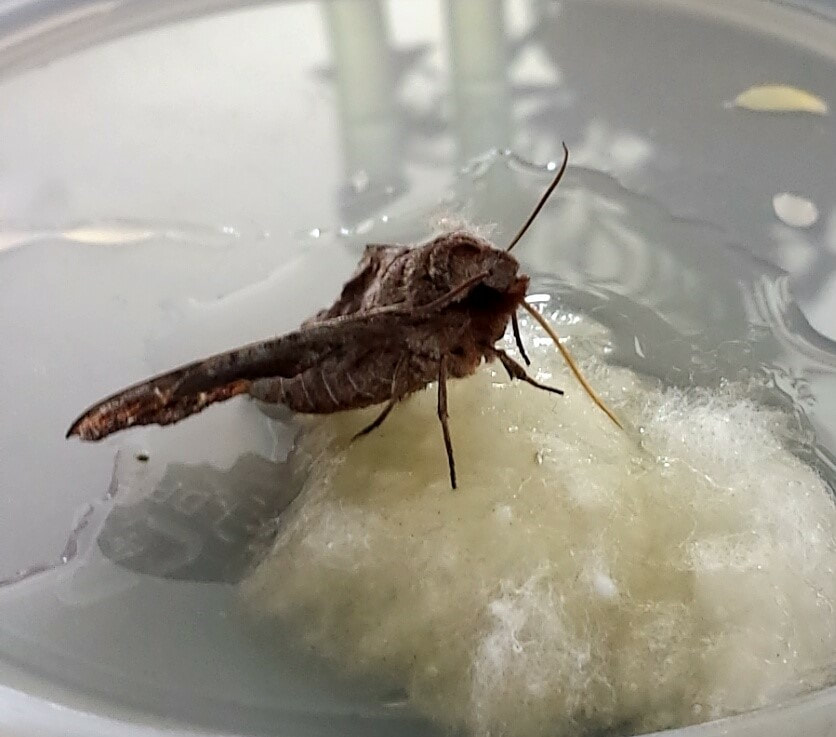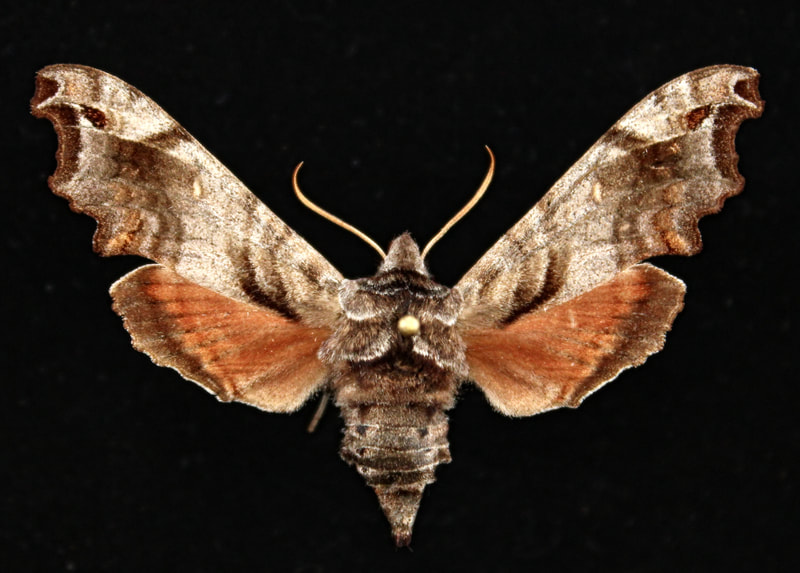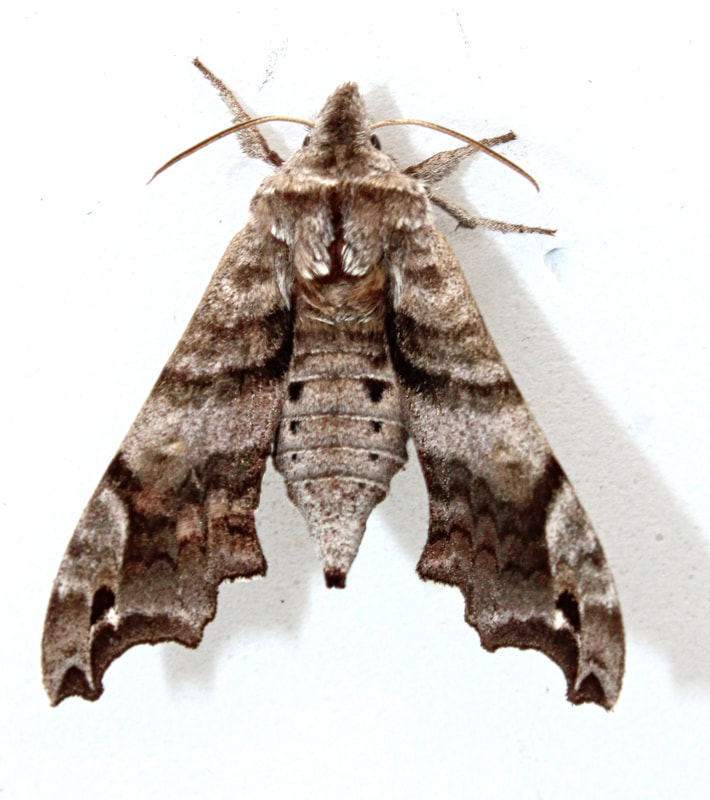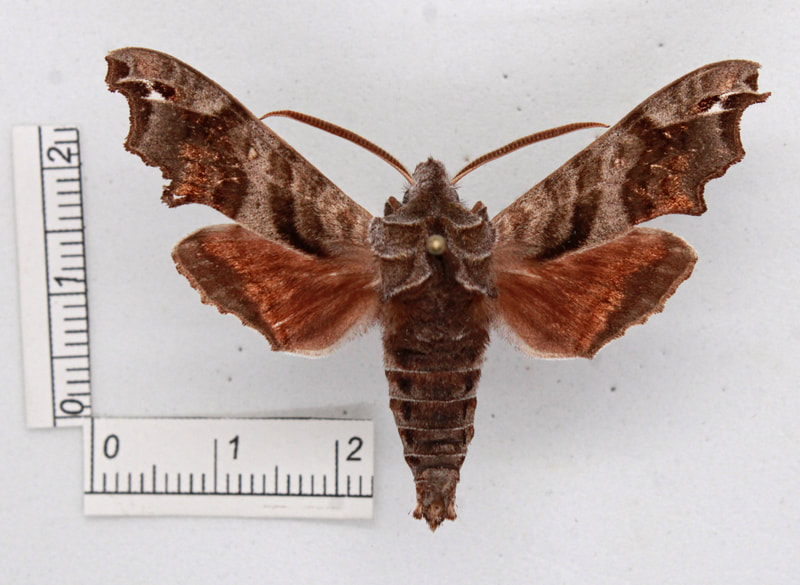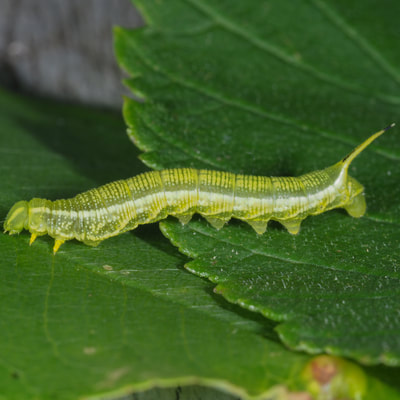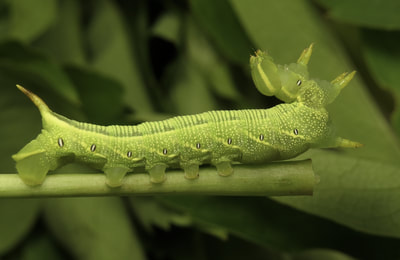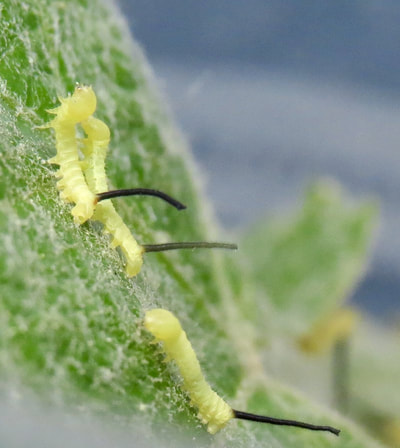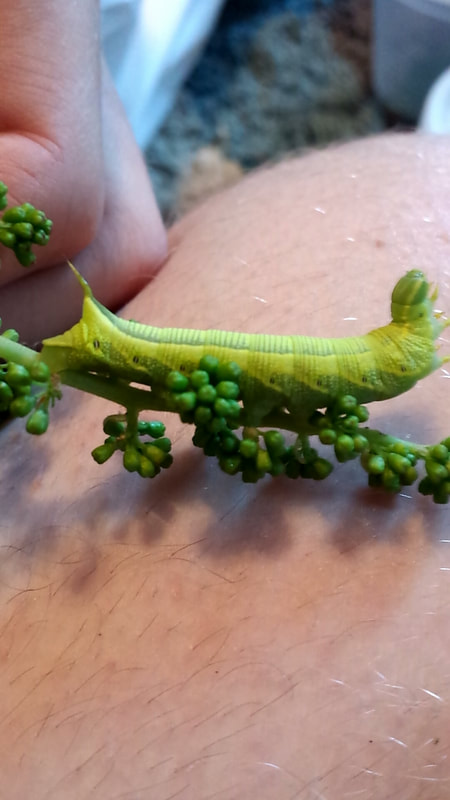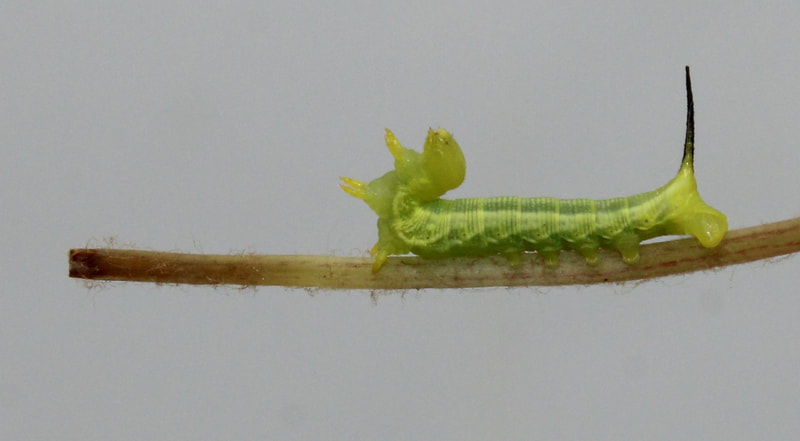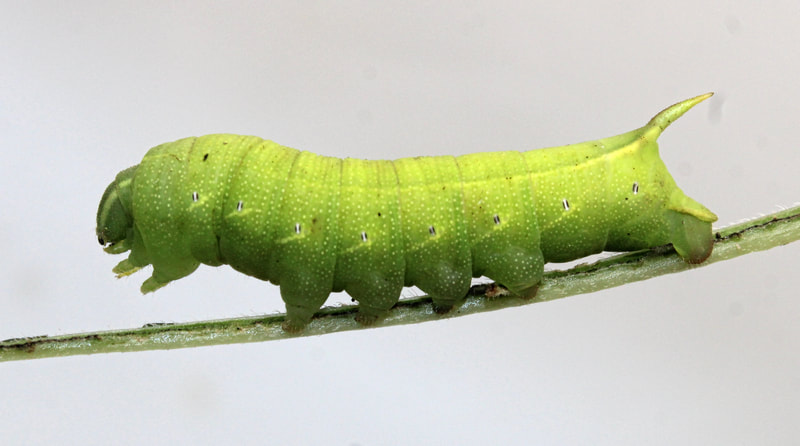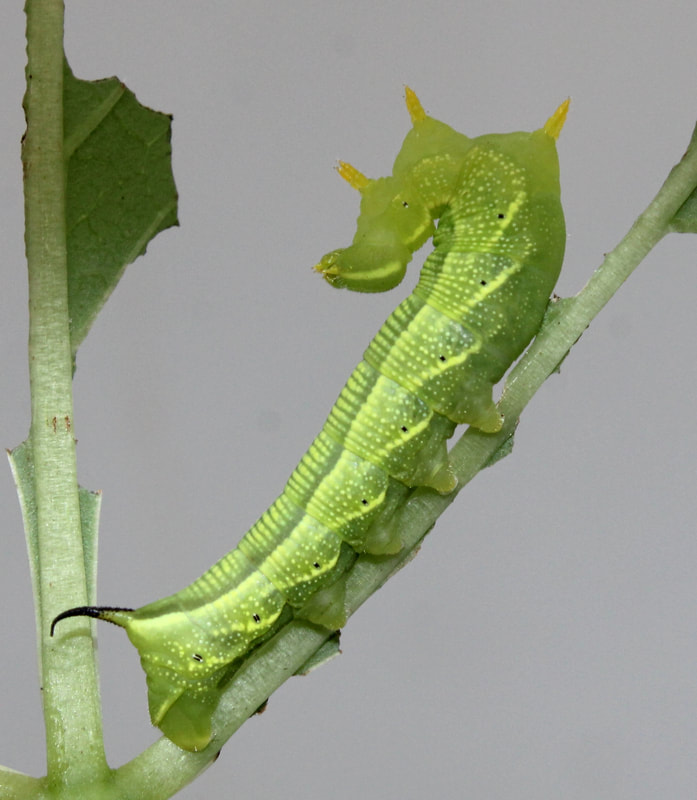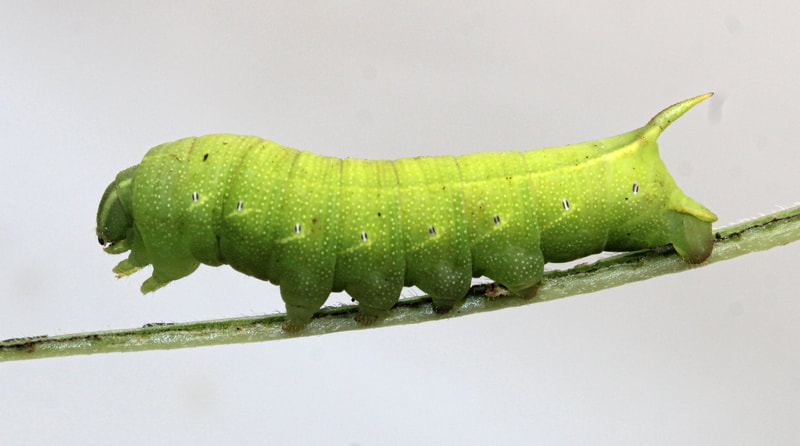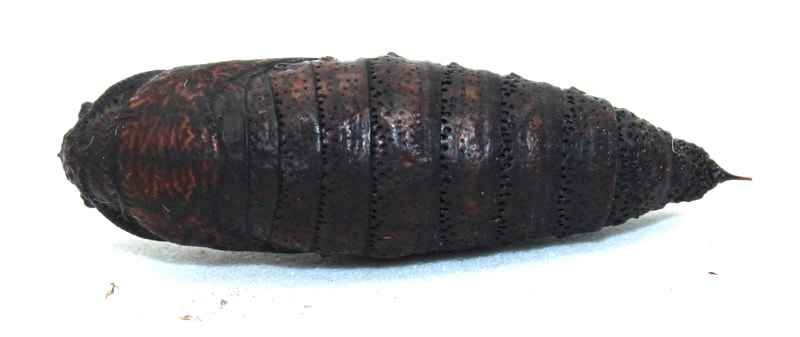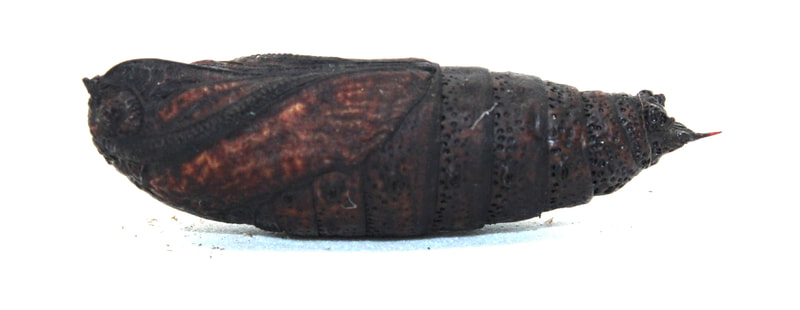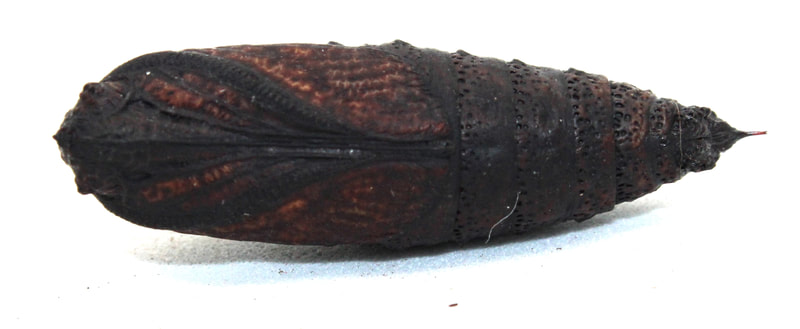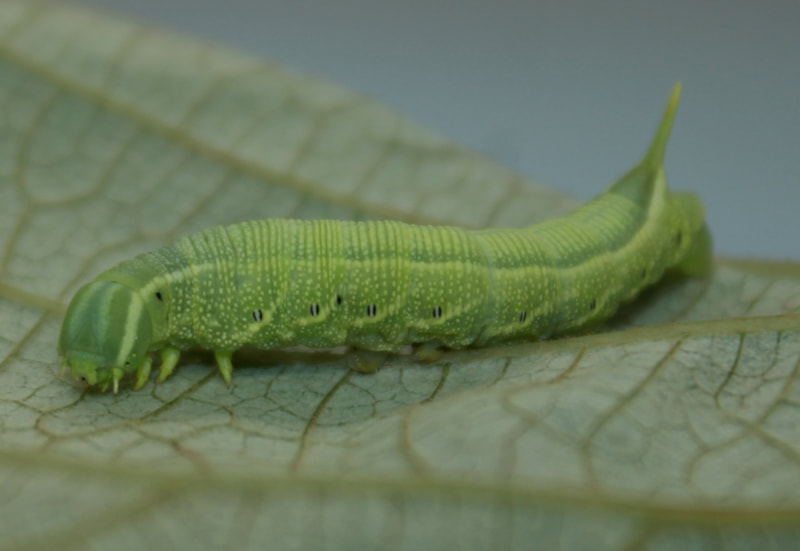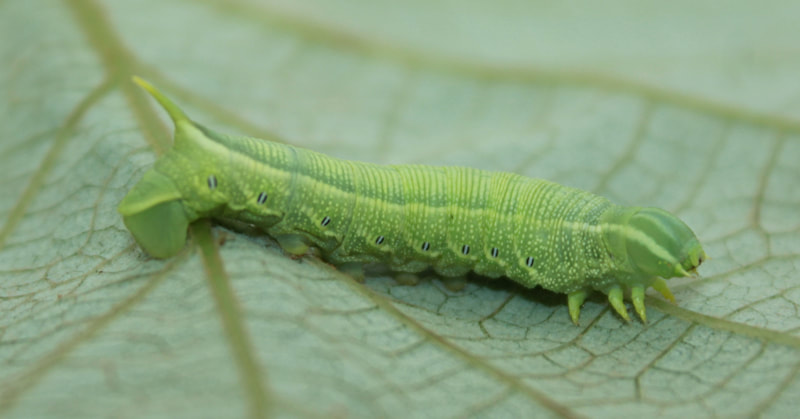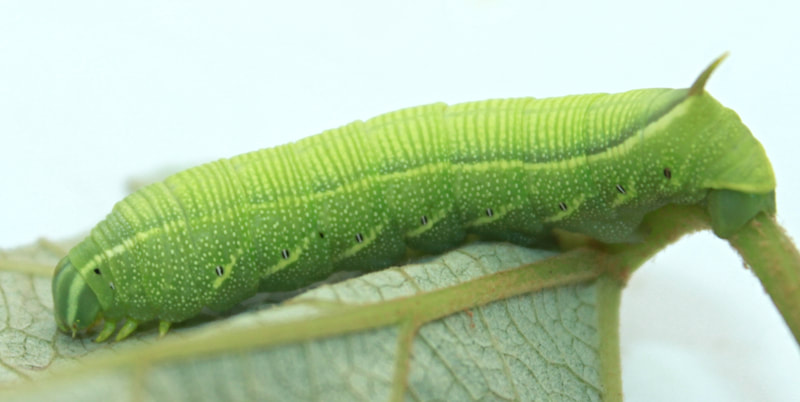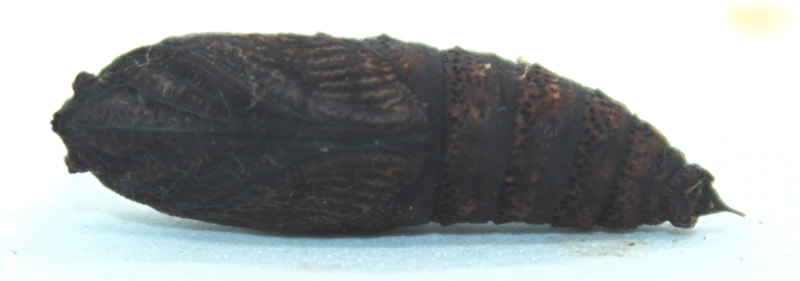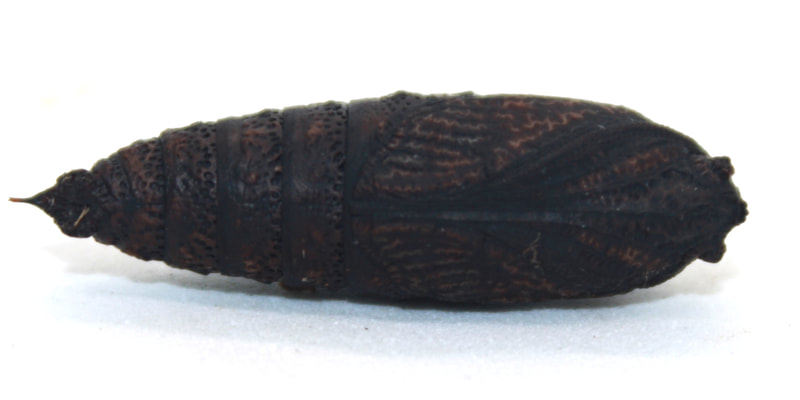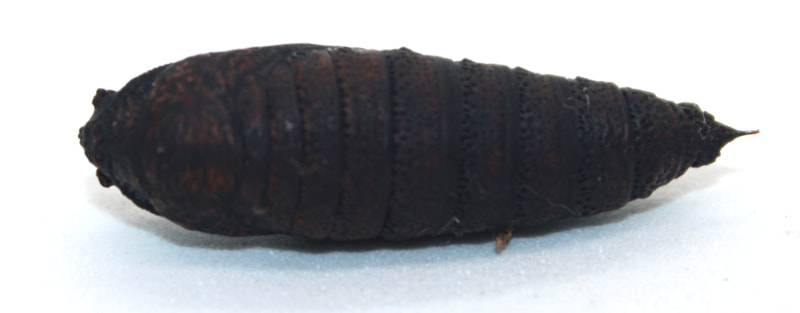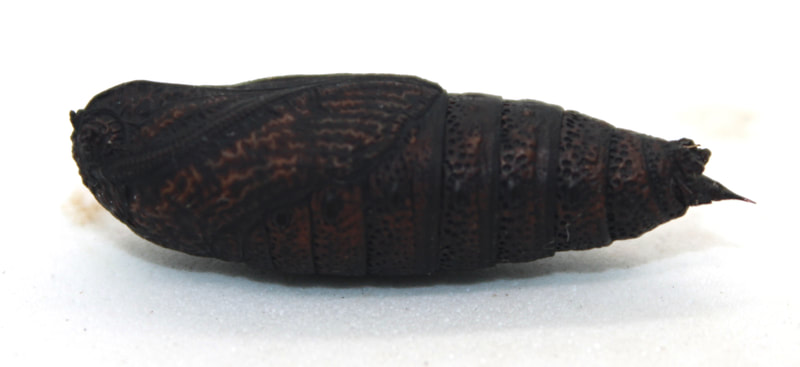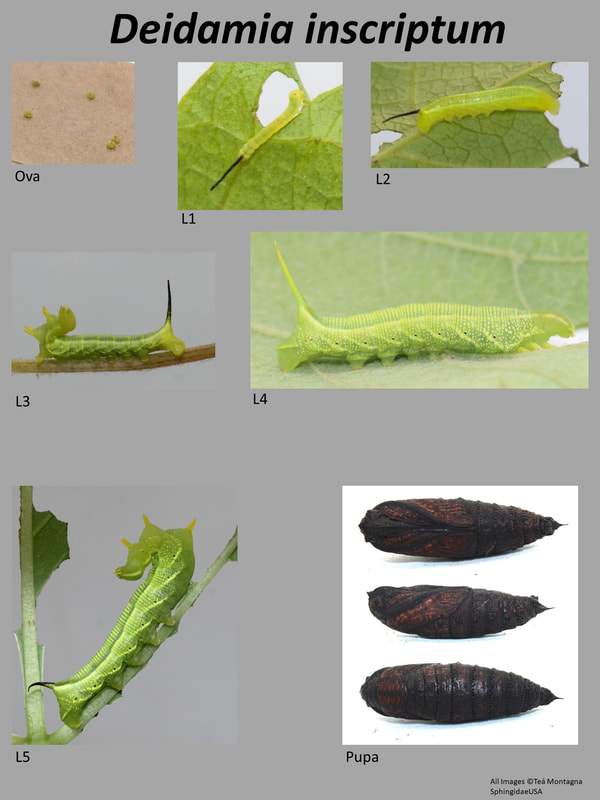|
Common Name(s): Lettered Sphinx
Ecology and Life History: In the Northeastern USA, this is one of our earliest flying Sphingidae, spanning from April to June. In the South it can fly even earlier. This moth is highly attracted to light, and other methods do not yield similar results. Adults of this species are not sexually dimorphic, and both sexes have the same patterning. Males tend to have thinner more triangular abdomens and often hold them slightly upturned at rest. Females have a much thicker conical abdomen and do not ever hold it upturned. Eggs are laid singly on the leaves of hostplant. They will occasionally find a suitable vine to lay, and lay multiple eggs, but the eggs are never grouped. Larvae feed singly in all instars. They are often feeding and resting on the undersides of leaves. First instars chew neat little holes in the leaves and often rest right near them. Older instars consume leaves starting at the edges. Habitat and Searching for Larvae: Larvae are inhabitants of Vitaceous vines, and use Parthenocissus, Vitis, and Ampelopsis. Larvae can be found virtually anywhere on the vines, but prefer leaves halfway up (chest height) especially ones draped over an object and slightly open around it (think a vine on a fence). They are rarely found on the bottoms of vines. This is a moth of suburban yards, urban parks, wetlands, fields, river-edges, and fencerows. Virtually anywhere there is ample host, this moth can occur. Larvae can be found from May through July, with the largest peak in mid to late June in the Northeast. This larva glows quite well under UV light, and searching the undersides of grape leaves with a UV flashlight is quite productive as many species of Sphingidae use it. Rearing Notes: This species will readily lay eggs in captivity. Placing adult females in brown paper bags, or a styrofoam cooler with leave you with many eggs. The adults do not need to be fed in captivity. As previously stated, this larva does well on most Vitaceous vines. In captivity, Vitis or Parthenocissus quinquefolia seems to be best for rearing. This species can be prone to disease and subsequent dying in captivity. It is important to keep the caterpillars well-ventilated, and not crowded. Young instars especially are prone to over-hydration and death when overcrowded. Sleeving is an exceptionally good method for rearing this larvae. Placing an entire vine of hostplant in a sleeve with a number of caterpillars will result in many becoming pupae. Pupation is easy using either soil, or the paper towel method outlined in the general information tab of this website. Pupae are prone to dessication, particularly because they pupate so early in the year. Keep pupae moist and check daily until they go into diapause for the winter. This species does need a diapause period before eclosing. Adult description: This is a small sphingid, with forewings 22-25mm in length (1). Often one of the earliest flying species, with records from the Northeastern US in late March or April. The forewings are brown, and are deeply serrated. There is usually a black line that cuts the wing in half that curves upward from the anal angle of the forewing to the costa. The apex of the wing is usually lighter than the rest of the wing. The hindwings are very plain and brown. Larval description: L5: The ground color of the larva is green with yellow patterning on the sides. The green is lighter on the sides below the yellow markings and darker on the dorsal surface. The larva has a distinctly yellow horn with a black tip, yellow thoracic legs, and black spiracles. Because the adult moth flies so early in the season, most caterpillars have pupated by late June in the Northeast and likely earlier farther South. Host plants: Click here to load this Caspio Cloud Database
Cloud Database by Caspio |
The gallery to the left contains photos of Deidamia inscriptum adults. If you have a photo that you would like to submit to us, please contact us.
The gallery to the right contains photos of Deidamia inscriptum larval and pupal stages. If you have a photo that you would like to submit to us, please contact us.
The gallery to the right contains photos of Deidamia inscriptum larval and pupal stages. If you have a photo that you would like to submit to us, please contact us.
|
|
